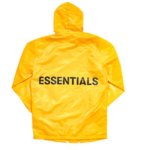If you’re a trader or someone interested in diving into the exciting world of Forex trading, you’ve probably come across the term “live forex market.” But what does it really mean? And how can you tap into the opportunities it offers? This comprehensive guide is designed to help you get a better understanding of the live forex market and provide you with the tools you need to make informed decisions. We’ll even touch on how forex widgets can help in navigating the market more effectively.
What is the Live Forex Market?
Let’s start with the basics: the live forex market is simply the market where foreign currencies are traded in real time. It’s one of the most dynamic, fast-paced financial markets in the world. Unlike stock markets, which have set hours, the forex market operates 24 hours a day, 5 days a week. That means no matter where you are or what time zone you’re in, there are always opportunities to trade.
The forex market is decentralized, meaning it doesn’t have a physical location. Instead, it’s made up of various global financial institutions, banks, brokers, and individuals who buy and sell currencies. All this activity happens continuously, giving traders the chance to make profits (or losses) based on fluctuations in currency exchange rates.
How the Live Forex Market Works
Understanding how the live forex market works is crucial to making smart trades. The forex market involves buying one currency and selling another at the same time. These currency pairs are often referred to by two-letter codes, like EUR/USD or GBP/JPY. In these pairs, the first currency is the base currency, and the second is the quote currency. The exchange rate tells you how much of the quote currency you need to buy one unit of the base currency.
For example, if you see EUR/USD at 1.2000, this means that 1 euro is worth 1.20 US dollars.
The Role of Forex Widgets
Now, let’s talk about forex widgets. These nifty tools can be a game-changer for traders. Forex widgets are small applications or tools that you can embed on your website or trading platform to get live updates about currency pairs, charts, market data, and more. If you’re running a forex-related website or just trying to keep an eye on the market, forex widgets can display real-time information, making it easier to make quick decisions.
Some forex widgets offer things like currency converters, live charts, and economic calendars. By having them readily available, you can stay updated without having to manually search for data every time you want to check market conditions. For traders, it can improve efficiency and responsiveness when the market moves quickly.
Types of Forex Trading
There are several types of forex trading strategies, depending on how long you intend to hold a position and what your risk tolerance is. Let’s explore a few common types:
1. Day Trading
This involves buying and selling currency pairs within the same trading day. Day traders aim to profit from short-term price movements, so they keep a close eye on live forex data to make decisions quickly.
2. Swing Trading
Swing traders typically hold positions for a few days or weeks. They look for price swings (or trends) that can bring bigger profits than the small moves targeted by day traders.
3. Scalping
Scalpers aim to make very small profits on frequent trades. This strategy involves high-frequency trades and is perfect for those who thrive in the fast-paced environment of the live forex market.
4. Position Trading
This strategy is more long-term and involves holding trades for months or even years. Position traders tend to focus on major trends and ignore short-term market fluctuations.
How to Read Forex Quotes in the Live Market
If you’re new to forex trading, understanding how to read currency pairs and quotes is fundamental. Here’s how you can do it:
- Base currency: The first currency in the pair, such as EUR in EUR/USD.
- Quote currency: The second currency, such as USD in EUR/USD.
- Bid price: The price at which the market will buy the base currency (how much the trader can sell it for).
- Ask price: The price at which the market will sell the base currency (how much the trader can buy it for).
So, when EUR/USD is quoted at 1.2000, it means that 1 euro is worth 1.20 US dollars. If the bid is 1.1998 and the ask is 1.2002, it tells you the prices at which you can buy or sell.
Tools to Navigate the Live Forex Market
To effectively navigate the live forex market, you need the right tools. Here are a few essential tools that traders often use:
- Live Forex Charts: These charts provide real-time data on price movements. They allow traders to see market trends and identify patterns that might indicate potential trading opportunities.
- Economic Calendar: This tool tracks important economic events, such as interest rate decisions, GDP reports, and inflation data. By using a forex economic calendar, traders can anticipate market movements based on upcoming news and events.
- Forex APIs and Dashboards: If you’re a developer or a financial institution, integrating forex APIs into your systems can provide seamless access to live market data. These tools allow you to build customized dashboards and trading platforms for yourself or your clients.
Why Real-Time Data is Important for Forex Traders
One of the biggest advantages of the live forex market is access to real-time data. Currency values can change rapidly, so having up-to-the-minute information can make all the difference between a winning and losing trade. This is where platforms like FXpricing come in handy. They offer real-time forex data, customizable widgets, economic calendars, and other tools that make it easier to keep track of the market.
If you’re trading, having access to real-time data means you can react instantly to market changes. Whether it’s buying or selling, making decisions on the fly is crucial in forex trading.
Tips for Beginners Trading in the Live Forex Market
If you’re just starting out in the live forex market, it can feel overwhelming. Here are a few tips to help you get started:
- Start Small: Begin with a demo account to practice before risking real money. This allows you to familiarize yourself with the market and its movements without losing any funds.
- Use Stop-Loss Orders: Protect yourself from big losses by using stop-loss orders. These orders automatically close a position when it reaches a specific price, limiting your potential losses.
- Stay Informed: Keep track of the news and events that influence currency movements. By staying updated with real-time data, you’ll be in a better position to make informed trading decisions.
- Manage Your Risk: Never risk more than you can afford to lose. Effective risk management is key to long-term success in forex trading.
Conclusion
The live forex market is an exciting and dynamic space, offering numerous opportunities for traders to profit from currency fluctuations. To make the most of it, it’s essential to stay informed and make use of powerful tools like forex widgets, live charts, and real-time data. Whether you’re just starting out or are a seasoned trader, understanding how the market works and having the right tools at your disposal can help you stay ahead of the curve.
If you want to take your trading to the next level, platforms like FXpricing offer comprehensive financial data, customizable widgets, and other resources that can make a real difference in your trading success. By utilizing these tools, you can enhance your ability to track the market and make more informed decisions.
FAQs
- What is the live forex market? The live forex market is where currencies are traded in real time, 24 hours a day, five days a week. It’s a decentralized market where banks, financial institutions, brokers, and traders exchange currencies.
- How do forex widgets help traders? Forex widgets display live data like currency exchange rates, charts, and market trends directly on your website or trading platform, helping traders make quick, informed decisions.
- What’s the difference between forex bid and ask prices? The bid price is the price at which the market will buy the base currency, while the ask price is the price at which the market will sell it. The difference between these is called the spread.
- What tools do traders need to succeed in the forex market? Traders need access to live forex charts, economic calendars, and real-time data to make informed decisions. Tools like FXpricing’s forex widgets and dashboards can greatly enhance trading performance.
5. How can I start trading in the forex market? Start small by practicing with a demo account, use stop-loss orders to limit losses, and stay updated with market news and data to improve your trading decisions.


